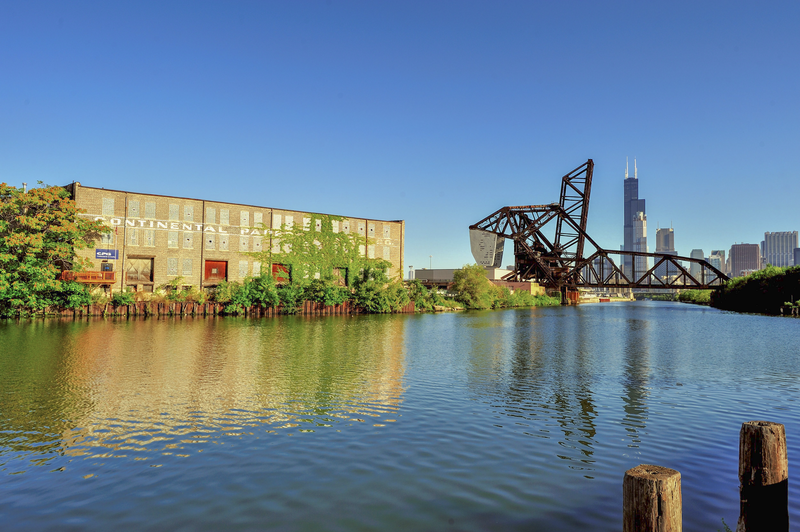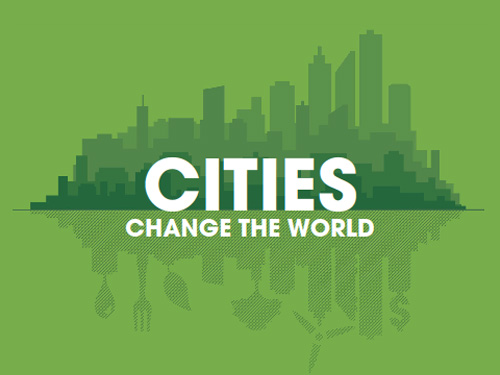Cities emerge, flourish, shrink, and undergo transformations. They die, and are sometimes reborn. Some undergo complete metamorphosis: Singapore, The Ruhr, Copenhagen and Medellín have coped with social or economic crises by changing their development patterns. Others have developed innovative strategies of resilience. All will have to negotiate profound changes to deal with the ecological and social challenges of the next century. But how?
Over recent decades, poverty has decreased globally thanks to economic growth made possible by the increased extraction of fossil energy and natural resources. But this reduction goes hand in hand with a worsening of social and economic disparities on all scales. Anthropic in origin, global warming is accelerating. It is highly likely to lead to a temperature increase of at least 1.5 °C, or even 2 °C, between 2030 and 2050 compared to pre-industrial levels, with irreversible impacts on ecosystems. Global biodiversity is declining at an ever-increasing rate. Large cities will be in the forefront to cope with acute crises in a variety of forms: risks of flooding and hurricanes, sanitary and migratory crises, network vulnerability, social and economic impacts occurring in sequence, etc. Some are preparing for this with eco-planning, mitigation, climate change adaptation and resilience strategies. Ecological, economic and political crises are not a new phenomenon, but in future they will be more global and systemic. At the dawn of the 2nd century CE, Leptis Magna was one of the most opulent cities in the Roman world, but its harbour was gradually being choked with silt, partly due to deforestation. A decision was made to enlarge the harbour seawards: this only served to speed up the silting process, which accelerated the city’s economic decline. It would suffer earthquakes, a tsunami and invasions before finally being abandoned to the desert sand. Ephesus and other cities met a similar fate. To survive in the future, cities and regions will have to adapt as soon as possible, with the support of states and international institutions. This will involve the co-construction of positive trajectories leading towards a desirable and possible future for us all. Local authorities will have to carefully anticipate the stages of this process, clarifying possible options and their consequences. They will have to be able to negotiate agreements with economic stakeholders, companies, intermediate organisations, neighbouring territories, and citizens’ associations: everyone will have to forego certain advantages so that something can be gained in terms of economic or cultural opportunities, quality of life and wellbeing.
- How can a long-term trajectory of change be constructed?
- How can support be found to finance structural choices that contribute to change?
- How can ecological, social and planning innovations be implemented on a large scale?
- How can we capitalise on progress that has been made to win over public opinion and move further forward?
To attempt to answer these questions, what better than to look back over the experiences of cities and metropolitan regions that have profoundly changed in the space of one or two generations? Who would have thought in 1989 that the Ruhr Valley, all but ruined by the collapse of the steel industry, would turn into a greener, more attractive region thanks to innovative ecological and cultural conversion programmes (read the article by Michael Schwarze-Rodrian)? Malmö experienced a profound economic and social crisis in the early 1990s, and transformed into a European capital of sustainable planning that is economically dynamic though still socially fragile. The insolent prosperity of neighbouring Copenhagen, one of the world leaders of “green growth”, makes us forget that it managed to cope with the profound crisis of the 1990s thanks to a strategic alliance with the Danish state. It is enlightening to compare New York with Copenhagen: also bankrupt in the 1980s, New York has made a spectacular recovery since 2001 but without the necessary structural changes, making it lag further behind in terms of ecological and energy transition. The case of Medellín is remarkable. Beset with problems of violence and drug trafficking in the 1990s, thirty years later, in 2012, it was dubbed Most Innovative City of the Year by the Wall Street Journal. During these thirty years, five strategically-minded mayors have been able to develop high-leverage projects to generate a new dynamic on a metropolitan scale (article by Luis Fernando Gonzalez and interview with Ximena Covaleda). In Seoul, change began in the mid 2000s, when the city turned its back on the productivist urban development of the 1970s, adopting instead a model that places city-dwellers and the environment at the centre of its strategy (article by Hee-Seok Kim). Singapore has its own special story to tell: a young island city-state, poor and lacking resources in the 1960s, it has transformed into a prosperous fossil-fuel driven metropolis that is seeking a more sustainable environmental trajectory. Sometimes perceived as ungovernable because of the inertia and complexity of the economic, financial and political systems under which they operate, some cities have shown themselves to be amazingly malleable and permeable to change. When they suffer a serious crisis, or when they perceive the risks of slow decline, they find the necessary resources to change their trajectory and reinvent themselves by focusing on new development models. The size of cities, their maturity, their rate of growth, their institutional organisation, the engagement of the business community and of citizens, the social and cultural cohesion of metropolitan regions… all these factors influence the implementation of change strategies. But in all cases, the strategic vision, the ability to seize opportunities and the leadership of mayors, governors or state representatives, play a crucial role1.
Paul Lecroart, Senior Urbanist, L’Institut Paris Region
Metamorphosis
A process in which someone or something changes completely into something different.
(Oxford Advanced Learners Dictionary)
Resilience
The capacity to recover quickly from difficulties; the ability of a substance or object to spring back into shape.
(Oxford Advanced Learners Dictionary)
Wei ji (Mandarin)
Crisis. From wei “danger” and ji “tipping point” or “decisive moment”.
(Translated from Larousse French-Mandarin Dictionary, 2018)


